Understanding Data Races: A Visual Guide for Swift Developers
4 min read
This article is part of a series exploring concurrency through concrete, visual mental models for Swift Concurrency. Concurrency is hard. Clear pictures help.
Scope note: This post focuses on data races in shared memory. We won't cover other concurrency issues like deadlocks or race conditions (where the order of operations matters, even without data corruption).
One ToddlerBot, One Page
Single-threaded with mutable data
Meet ToddlerBot Zark.
A ToddlerBot is a physical worker that does exactly one thing at a time.
Today Zark has been handed a Job Card:
"Color this page: first the triangles, then the circles, then the squares."
Zark focuses on that Job Card and happily colors the page.
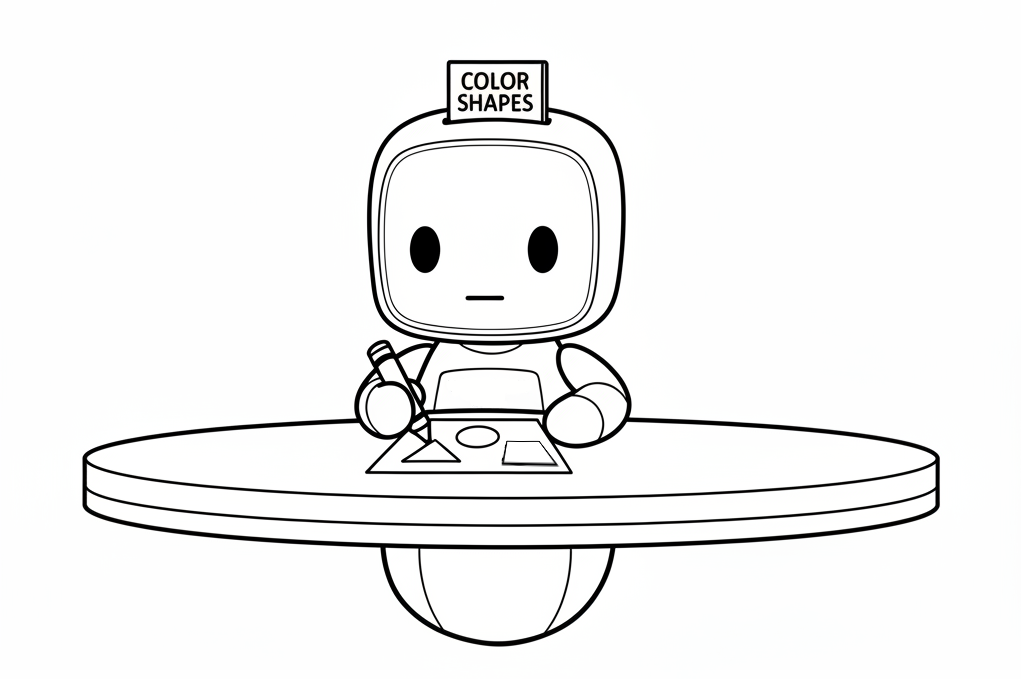
No surprises. No conflicts. Just one worker and one set of steps.
Everything is calm.
In Swift: ToddlerBot = OS thread. It runs instructions sequentially and never splits itself. Job Card = the code currently running (later this will map to a Swift Task).
Two ToddlerBots, One Page
Multiple threads, shared mutable data
The next day, something changes.
Zark has a new friend: ToddlerBot Yarek. Yarek is also a physical worker with his own Job Card:
"Color this page: first the squares, then the circles, then the triangles."
Important facts:
- Each ToddlerBot works on one Job Card at a time.
- A Job Card is a sequence of actions.
- The coloring page is shared between them.
The two Bots share a single coloring page.
They both dive in enthusiastically. Neither checks what the other is doing. Each assumes full control.
What happens when Zark and Yarek color the same shape at the same time?
A mess.
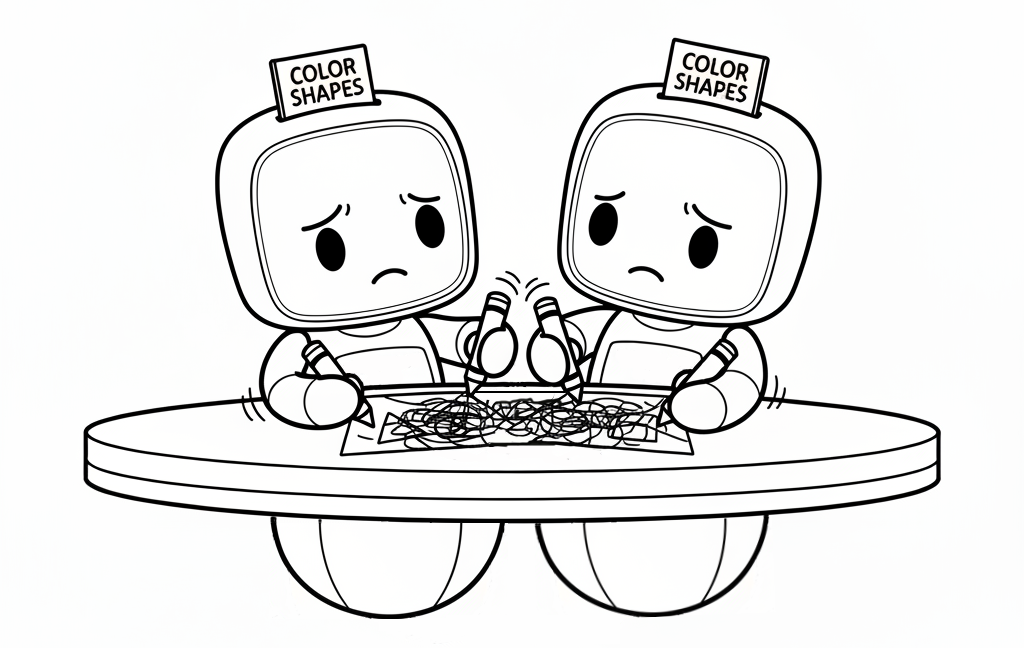
In Swift: This illustrates a data race: Two threads accessing the same memory location concurrently, where at least one performs a write. Shared page = shared memory. Every shape is a piece of memory that can be read or written.
ToddlerBot Leon Crashes the Party
When data races cause crashes
And then Leon walks up.
Leon has his own Job Card:
"Look at the triangle. Color the circle the same color as the triangle."
Leon looks at the triangle: it's blue. He picks up his blue crayon and reaches toward the circle.
But in that moment, Zark recolors the triangle red.
Leon colors the circle blue (matching what he saw), but now the triangle is red. They don't match.
Leon's work looks wrong even though he did everything right. This impossible situation breaks his understanding of how things should work. He gets upset, throws a tantrum, and rips up the page. Everything is destroyed.
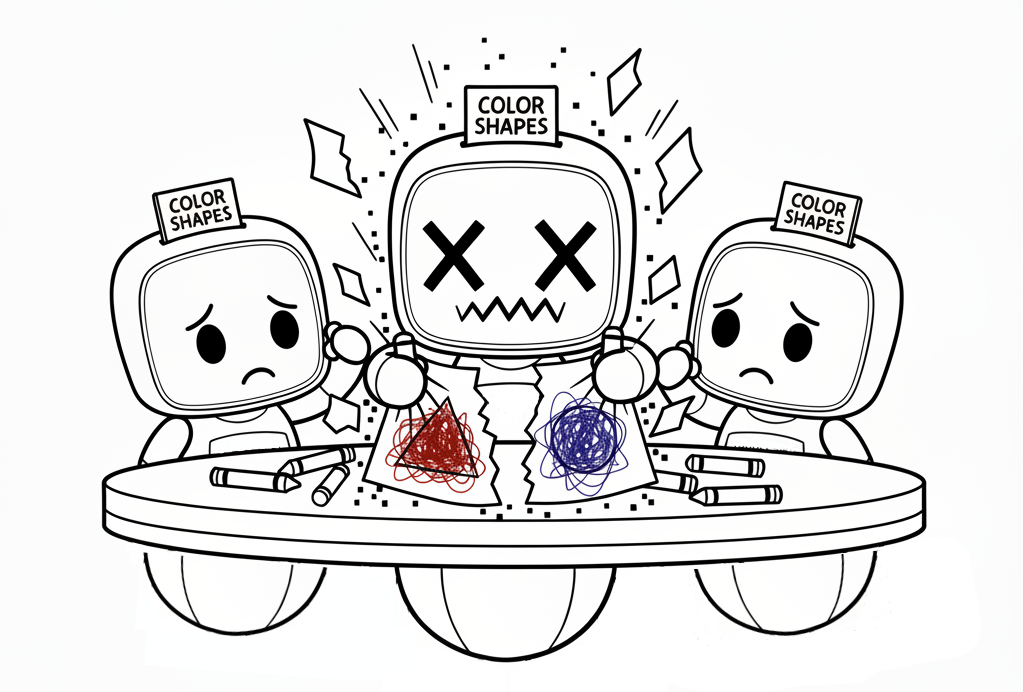
Sometimes when two Bots color the same shapes, the page just looks messy - wrong colors, but still readable.
Sometimes, as Leon demonstrates, everything gets destroyed.
In Swift: Leon represents code with strong assumptions about state. If those assumptions are violated by a race, your program may crash or corrupt memory. Sometimes data races just make data inconsistent. Sometimes they destroy everything.
How do we prevent chaos?
Strategies for thread safety
Two broad strategies:
1. Don't share the page
Give each ToddlerBot a separate page.
Zark colors triangles on his own page. Yarek colors squares on his own page. When they're done, someone carefully combines the results onto a final page.
No shared page → no conflicts.
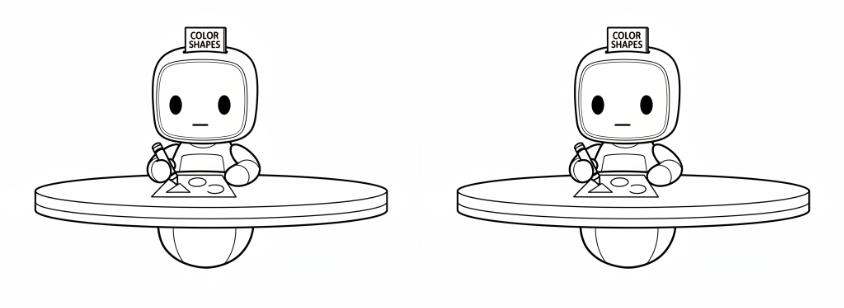
In Swift: This corresponds to copying data, using value types, working on isolated state, or eliminating shared mutation. No shared mutable data → no data races.
2. Share the page, but only one ToddlerBot at a time
Let only one Bot colour the page at once. Everyone else waits their turn.
Zark approaches the shared page and puts up a "Working - Do Not Disturb" sign. Yarek sees the sign and waits. When Zark finishes and removes the sign, Yarek takes his turn.
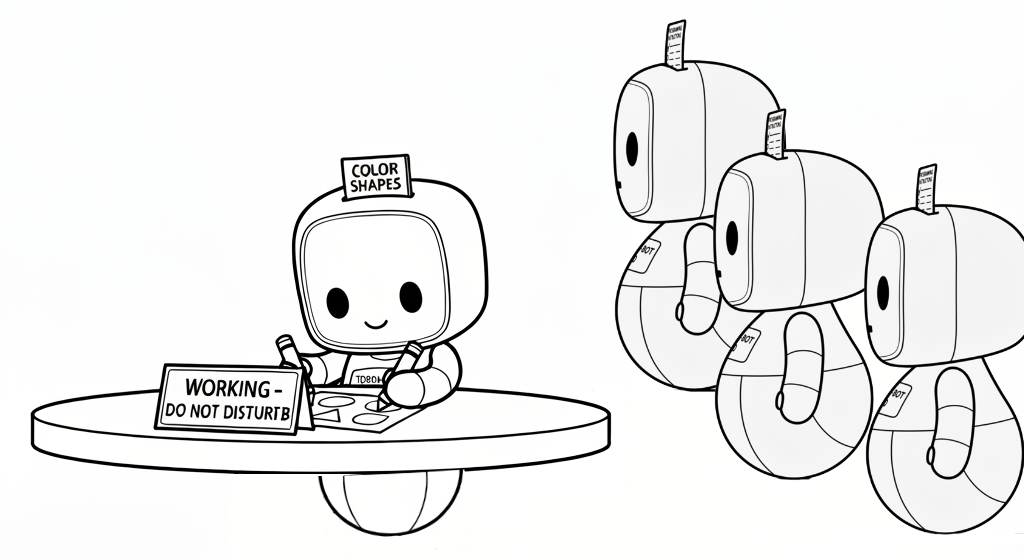
In Swift: This maps to locks, isolation, and Swift actors.
Where the analogy goes next
Recap and what's coming
Let's recap what we've learned:
ToddlerBots are threads - physical workers that execute instructions one at a time.
Job Cards are code - the sequence of actions a ToddlerBot follows.
The coloring page is shared mutable data - when multiple ToddlerBots access it at the same time, with at least one writing, we get data races.
Data races cause problems - sometimes just messy data, sometimes catastrophic crashes.
Two strategies prevent races - don't share the data, or ensure only one ToddlerBot accesses it at a time.
So far, Job Cards have stayed glued to their ToddlerBots. This reflects traditional multithreading: the code and the thread are stuck together.
In the next post, we'll see how Swift Concurrency changes this fundamental relationship.